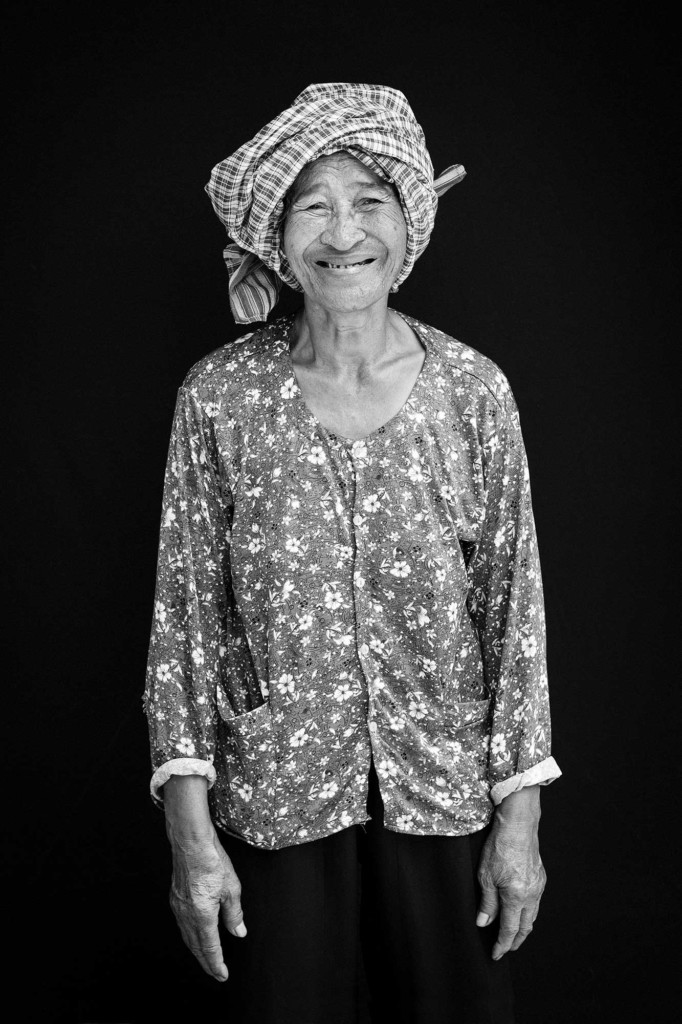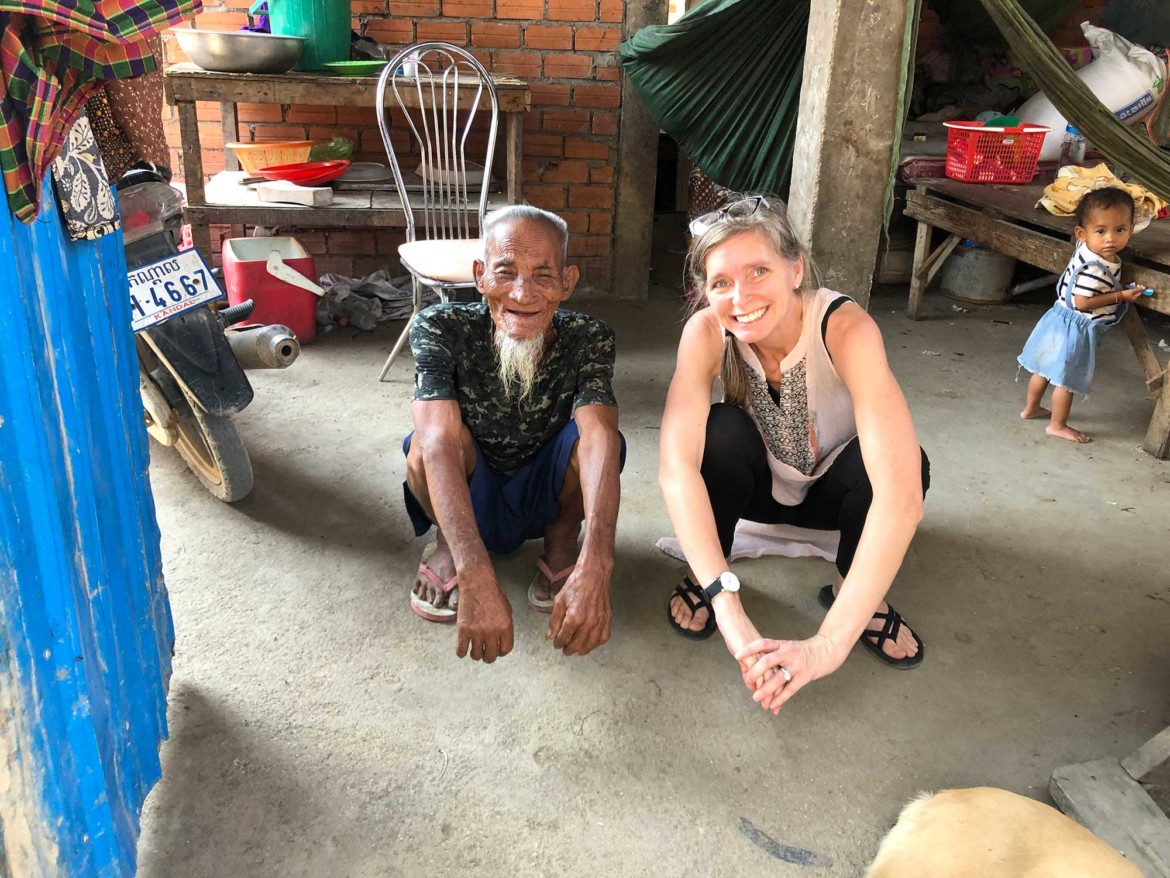By Cristina Schreil
Kirsten Belloni remembers the day she conceived her project.
It was 2015 and Belloni was in Cambodia. It’s where she’s lived on and off since 2011 and full-time since 2017, teaching and doing missionary work through the organization Asian Hope. Part of her job was to document students and their families for the organization.
One household comprised a young student and his grandparents. The conversation with the grandfather soon turned to the past: he revealed he was part of the opposition army fighting the Khmer Rouge, the ruthless communist regime that ruled the southeast Asian nation from 1975 to 1979. Throughout, two million Cambodians died—either executed or from starvation, disease, or overworking to fulfill the Khmer Rouge’s vision of an agrarian communist society. This grandfather was one of many who, while making it out alive, suffered. “He told us about being captured, chained to the back of a truck, and dragged down a dirt road … he also showed us a scar on his leg where he had been shot trying to escape,” Belloni recalled. She described that he teared up. All the while, his young grandson laid on the ground listening.
“At the end of our interview, I asked the grandfather if he had ever shared that story with his grandson before and he said, ‘No, this is the first I’ve talked about it. I haven’t told anyone.’ My jaw dropped!” Belloni said. At that moment, she realized this history would fade. “These old men and women were being swept aside by modern society and passing away, without sharing. So much was being lost.”

From Belloni’s viewpoint, if you don’t record these atrocities, “they’re going to repeat, possibly.” It set her on a new course, to document this older generation of Khmer Rouge survivors for a series of black and white portraits. They are a minimum of 60 years old, with the average being 75 to 90—the oldest is 99. Some are nuns from a Buddhist temple near her home. She’s up to 38 portraits, with a goal to reach 50 by the time she leaves Phnom Penh in June 2020. She’s taking notes on their stories along the way, with the help of translators.
Her approach to photography is something she honed as an online student at Academy of Art University’s School of Photography (PH). She’s since started a portrait business in Anchorage, her other home base when not in Phnom Penh. Belloni said that without studying at the Academy, she’d be lost on how to tackle this “intersection of passion, purpose, and the training that came from my time at the Academy,” she said.
She envisions showing these portraits, displayed as large as possible, in a gallery. She wants viewers to take in each subject as if they were standing there in person.
“Photography as a medium often makes stories very real for the viewer. When they can see someone’s eyes, the lines of their face, or their hand and body gestures, it helps to connect us as humans in ways that text alone is often not able to accomplish to the same degree,” said Associate Director of Online Graduate Photography Tamara Hubbard. Hubbard was Belloni’s thesis advisor and continues to support her.
Belloni’s shooting process is purposefully simple. She shoots outdoors, sometimes on the side of the road, using natural light and a black backdrop. She uses a 100 mm lens on her Canon 5D Mark III. After prompting subjects to just be themselves, she shoots quickly, often just in five to 10-minute sessions, taking a few compositional approaches. She interviews first, which establishes a relationship that makes for more connective photographing. The interview is also a rare window for her Cambodian translators, who sometimes assist her photography. “It’s not just something you walk up to an older person on the street and ask. But, because I’m a foreigner, I have some [leeway] to be able to do that.”
Belloni describes her subjects as stoic people. Even after such atrocity in their youth, they’ve picked up and moved on, she described. “Most of the women I’ve talked to have said, ‘Oh yeah, I had 15 children total but seven of them died in the war.’ Or, ‘Oh yeah, my husband was murdered.’”
Some subjects don’t want to mine certain memories, which Belloni said she makes a point to respect. But, it makes moments when emotions bubble up all the more impactful. In interviewing one man, Belloni sensed she prodded too much; the man cried. “I started to apologize all over the place,” Belloni recalled. “The translator explained, ‘Oh no, he just said he’s so moved that anyone cares to hear his story.’”
Belloni isn’t posting photos from her ongoing documentation of Cambodia’s older generation yet on social media. It feels too poignant and weighty to garner just a thumb’s up emoji, she said. “The overall purpose is to educate and inspire, while simultaneously honoring those who survived.”
For more on Belloni’s work, visit belloniphotography.com.
